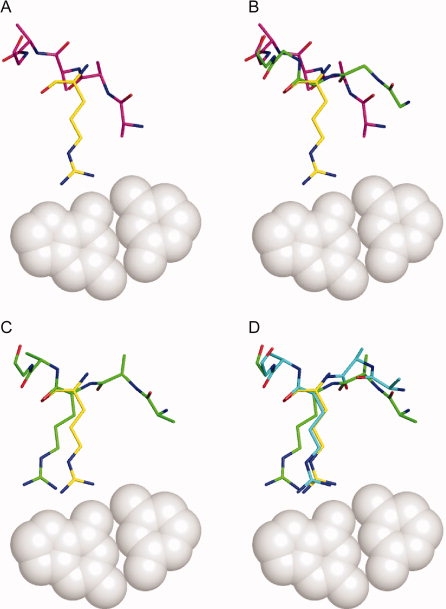Figure 4.

Single motif incorporation. A: An inverse rotamer (shown in yellow) is selected for incorporation if a subset of its backbone atoms (see Methods section) are approximately super imposable with any residue in the protein (starting conformation shown in magenta). B: Backbone conformational relaxation under a potential augmented with constraints to force the coincidence of inverse rotamer and protein backbone atoms yields an altered protein backbone (shown in green). The incorporation attempt is terminated if the final rmsd between the two sets of backbone atoms is above a threshold value. C: The inverse rotamer is superimposed onto the protein backbone (shown in green). Small differences in backbone atom positions (amplified by a lever arm effect along the side chain) result in the displacement of the side chain functional atoms from the original interacting positions. D: A second round of relaxation is performed with constraints between the functional atoms of the original and superimposed inverse rotamers to restore the desired interaction (final conformation show in cyan).
